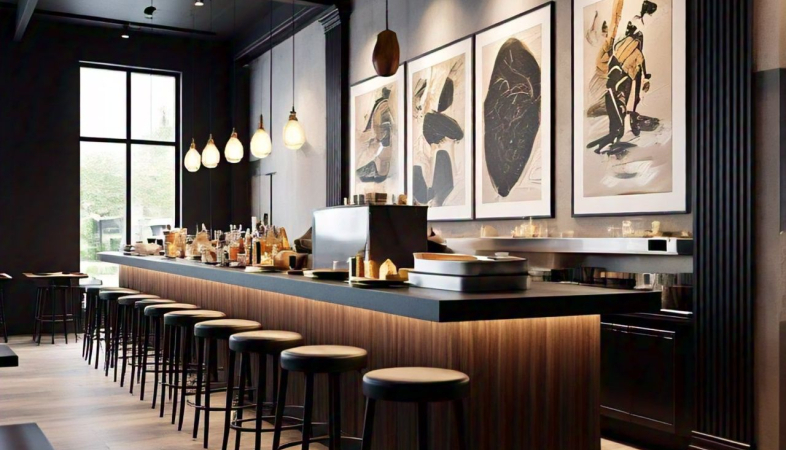Designing Hotels with Energy-Efficiency in Mind: Best Practices and Innovations
This shift towards greener buildings is reshaping the way hotels operate, benefiting both the planet and the bottom line.
As the hospitality industry continues to evolve,
sustainability has become a key priority for hotels around the world. Guests
increasingly seek eco-friendly accommodations, and hoteliers are realizing that
adopting energy-efficient practices not only helps the environment but also
reduces operating costs. Designing hotels with energy efficiency in mind is no
longer just a trend; it’s an essential practice that combines innovative
technologies with thoughtful design choices. This shift towards greener
buildings is reshaping the way hotels operate, benefiting both the planet and
the bottom line.
One of the most important elements of energy-efficient hotel design is the building’s envelope, which includes the walls, roof, windows, and doors. By focusing on high-performance insulation and energy-efficient materials, hotels can significantly reduce heating and cooling costs. Triple-glazed windows, for example, are a common innovation in energy-efficient hotel design. These windows provide excellent thermal insulation, keeping rooms cooler in the summer and warmer in the winter. Additionally, energy-efficient building materials like insulated concrete forms or reflective roofing can help maintain a comfortable indoor climate while reducing energy consumption.
Another crucial aspect of energy-efficient hotel design is the use of smart lighting systems. LED lighting has become the standard for energy-efficient hotels, offering long-lasting and cost-effective illumination. Smart lighting systems take this a step further by automatically adjusting the brightness based on the time of day or occupancy. For instance, lights can be set to dim when a room is unoccupied or during certain hours, saving energy without compromising guest comfort. Furthermore, hotels can install motion sensors in common areas, such as hallways and bathrooms, to ensure that lights are only on when needed.
Incorporating renewable energy sources is a growing trend in sustainable hotel design. Solar panels, for example, can help hotels reduce their reliance on grid power while producing clean, renewable energy. Many hotels are now installing solar panels on their roofs or in adjacent spaces to harness the power of the sun. Additionally, wind energy can be an effective source of power for hotels located in areas with consistent wind patterns. By integrating renewable energy sources into the design, hotels can significantly reduce their carbon footprint and even generate surplus energy that can be sold back to the grid, further offsetting operating costs.
Water conservation is another important aspect of energy-efficient hotel design. Hotels use large amounts of water for guest services, including showers, laundry, and landscaping. To reduce water usage, many hotels are implementing water-saving technologies like low-flow faucets, showerheads, and toilets. Some hotels also recycle greywater (wastewater from sinks, showers, and laundry) for use in irrigation or for flushing toilets, which further reduces their environmental impact. Landscaping with native plants that require less water is another practice gaining popularity, as it reduces the need for irrigation and helps conserve local water resources.
Heating, ventilation, and air conditioning (HVAC) systems are among the largest energy consumers in hotels. To optimize energy efficiency, many hotels are opting for high-efficiency HVAC units and incorporating zoning systems that allow for personalized temperature control in individual rooms. This reduces energy waste by ensuring that only the areas that need cooling or heating are being powered. Additionally, hotels can install energy recovery ventilators (ERVs) to improve air quality while reducing the load on HVAC systems. These systems exchange heat between incoming and outgoing air, helping to regulate temperature and humidity without requiring additional energy.
Energy-efficient appliances and equipment also play a significant role in reducing a hotel’s energy consumption. From energy-saving refrigerators to dishwashers and laundry machines, choosing the right appliances can make a big difference in the hotel’s overall energy use. Many modern appliances come with Energy Star certifications, meaning they meet strict energy efficiency guidelines set by the U.S. Environmental Protection Agency. By selecting high-efficiency appliances, hotels can cut down on energy consumption and reduce their utility bills while providing a high level of service to guests.
Designing hotels with energy efficiency in mind is essential for creating sustainable, cost-effective, and eco-friendly accommodations. By incorporating smart design choices such as energy-efficient building materials, renewable energy sources, water conservation technologies, and high-efficiency HVAC systems, hotels can reduce their environmental impact while providing a comfortable and memorable experience for guests. As sustainability continues to be a key driver of consumer choice, hotels that embrace these innovations are well-positioned to lead the way in eco-conscious hospitality.
.png)





























